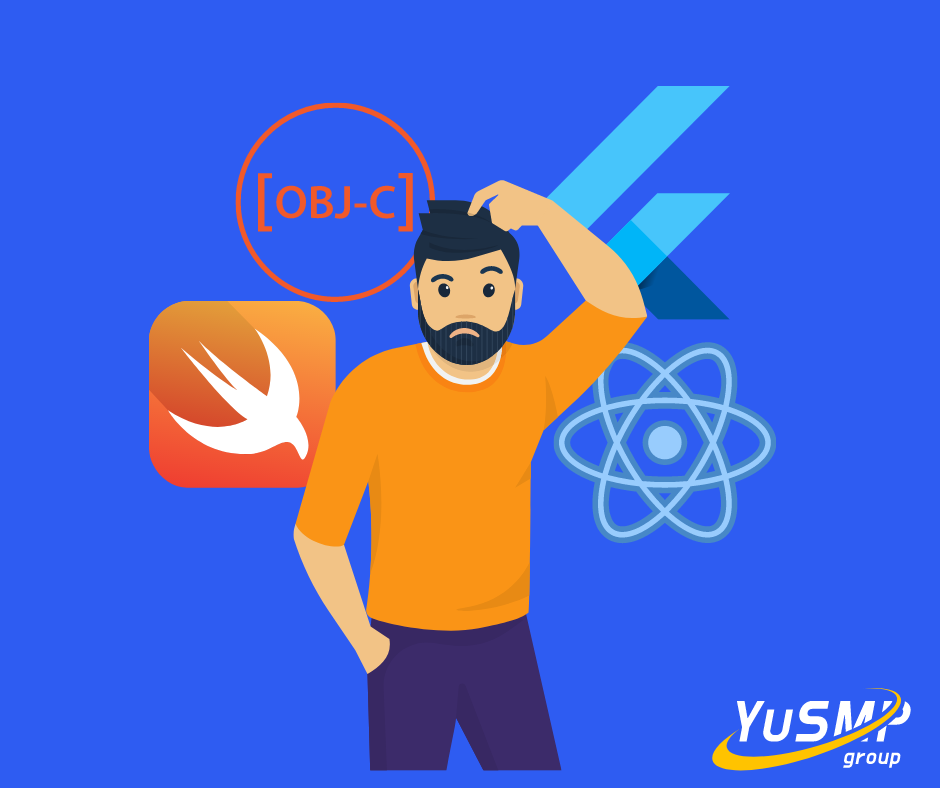Over the past year, the mobile app market has made a big leap: from 197 to 250 billion downloads per year. It is obvious that the sector will continue to grow: more and more entrepreneurs are looking towards mobile development. Attractive and reliable software can help improve branding, as well as retain customers for a long time. But in order for the application to be like that, it is important to choose the right technologies.

The stack plays an important role in the application development process: the selected technologies will determine which functionality the future product will pull and whether it will be possible to scale it in the future or not. Also, the rate of specialists and the time for development will depend on the stack.
We have made a mini-guide on technologies for developing on iOS, which is the most popular. This article is to help you understand and make a choice.
Native application development
Native development is the creation of a product that is written in original programming languages created specifically for the selected platform. Native languages for iOS are Swift and Objective-C. Such an application will only work on its own platform.
Objective-C
Objective-C is a general-purpose language that is designed on top of the C programming language by adding features of the Small Talk programming language, making it an object-oriented language.
Objective-C is used by Apple and has access to most of the standard libraries. An application developed on this technology has a beautiful smooth interface and works quickly.
Swift
Swift is a more functional language, it is easier to avoid errors in the code. In addition, applications in this language will be more productive, and Apple now also supports this technology.
In our YuSMP Group web studio, iOS developers use Swift, because it offers effective functions with a minimum amount of code that can be easily maintained.
Other technologies for developing applications for iOS
Flutter is a cross-platform development technology created by Google. Applications created on this framework will work on both Android and iOS. Flutter is flexible and widely used in the Yusmp Group, but the choice of cross-platform technology is not always optimal. We have written earlier about which development to choose.
Factors to consider when choosing a technology
There are a lot of technologies for iOS in the field of mobile development, but it is quite difficult to choose the best one for a specific project. To do this, it is extremely important to understand exactly what product is needed now. The discovery phase helps to understand this-the development stage, where ideas are worked out, a pool of future functionality is formed, and much more.
The type of project is the determining factor of the stack. For example, if you want to create a complex application for iOS with high performance and user interface implementation, it is better to choose native development. In this case, Swift will be the best programming language for creating a mobile application.
Checking the idea. This is relevant for startups who only want to test the idea of a product. At this stage, it is important to attract potential users in order to better understand the needs of the target audience. Then we can consider Flutter since it is cost-efficient and allows you to reuse code on many platforms. This leads to wide platform coverage and fast application delivery.
Entering the market moment. The way in which companies bring products to market is important for maintaining a competitive advantage. If you need to release a product as soon as possible, think about a framework or programming language with many ready-made solutions for general development, such as integration with social networks and authentication.
Summary
If you decide to create your own application for iOS, then first of all you will have to choose between native and cross-platform technologies. The first ones are more expensive and better, the second ones are cheaper and faster, but with limited capabilities. Then start from the budget, speed, and competence of the developers.
Understanding what you want from the product now will help you make the right choice. Perhaps, at the current stage, it is better to do with an MVP (a minimally viable product), rather than being sprayed on a complex application.
When choosing an iOS developer company, be aware of all the long-term consequences and analyze them correctly in order to create a reliable mobile application.